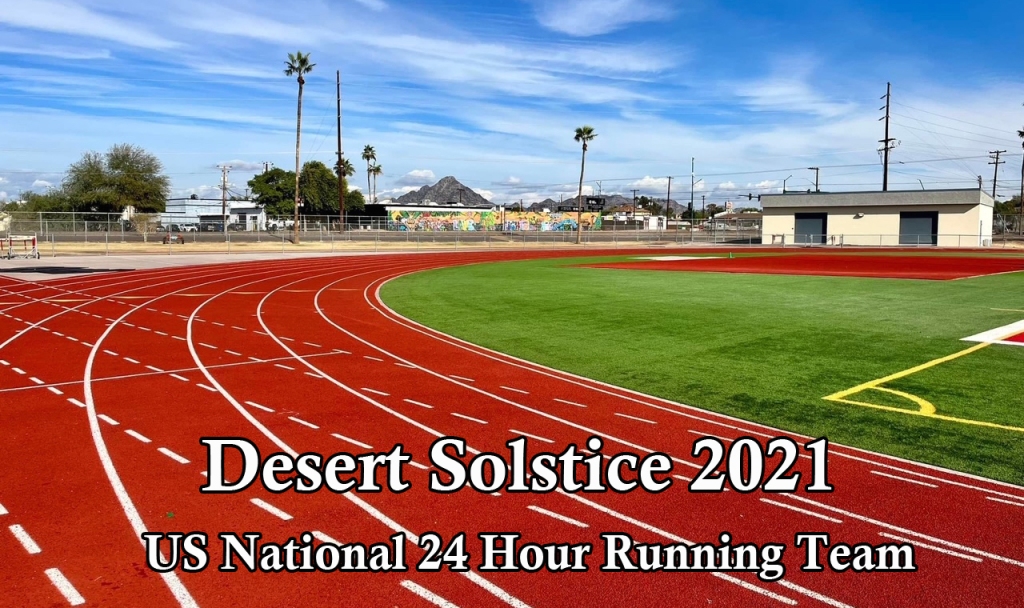
JOE FEJES offers up his annual analysis of the men’s field … as only Joe Fejes can! His takes are always bold and equal parts educational and entertaining. For 2021, he and “Bad Mike” Dobies have out-done themselves on the data and analysis front as you will see below. Fejes’ predictions have not always panned out, but he one of the most experienced and credible ultra runners, especially when it comes to multi-day and 24 hour running. Enjoy!!
The Number 9 – (From Hip Hop Song by DJ Shadow, The Number Song)
“1,2,3,4,5, break down baby. Come on get with it, 1, 2,3,4, hit it. This is the number song. Count down: 1, 2, 3, go…Who got the juice? Yeah yeah yeah. I got the juice…and the party’s already started…”
Ultrarunning aficionados, the Desert Solstice 24-hour Track Invitational hosted by world class organizer Aravaipa Running will take place on December 11, 2021, at 8 am (CST) in Phoenix, Arizona. Desert Solstice is the perennial premier 24-hour competitive race in the United States and is the ideal venue for uber-talented ultrarunners to break American or even World records and to qualify for numerous USATF national teams including the 100k and 24-hour team.
To make the event even more exciting, the USATF recently announced that qualifying for the 2023 USA 24 Hour Team began December 1, which means that Desert Solstice will recognized as a qualifier. The top six men and women will represent the USA at the IAU 24 Hour World Championship in Chinese Taipei, December 2023.
Regardless of what happens at Desert Solstice, 2021 will already go down in ultrarunning history as the year that Lithuania’s Aleksandr “Sania” Sorokin ran 192.25 miles in 24 hours, breaking the “unbreakable” 24-hour 1997 World Record of 188.52 miles set by Yiannis Kouros, the Running God, by almost 4 miles.
Sorokin’s pacing was a thing of beauty that will likely be used as a reference for generations to come. As a sidenote, Sorokin is also World Record holder for 100 miles (11:14:57) and 12 hours (105+miles).
Many ultrarunning experts believed (along with Yiannis) that Yiannis’ mark would last for centuries and certainly longer than 34 years. It remains to be seen whether Sorokin’s new mark is one for the ages. Sorokin is special. In fact I believe he is the first 100-mile World Record holder to also hold the 24-hour World Record.
Almost as shocking as Sorokin’s performance was that of the second-place finisher, Ukraine’s Andrii Tkachuk, who ran 183.53, the third best 24-hour performance of all time. By the way, Tkachuk, also ran a brilliant 270 miles/435.446km in a 48-hour event a mere few weeks prior.
When I ran my first Desert Solstice in 2012, the lingo for 24-hour runners focused on 5, 6 and 7’s—meaning 150s, 160s and 170s. The 8s or 180s was silly talk. Only Yiannis, the outlier Golden Greek, had eclipsed this mark. Well, not anymore. Sorokin’s 24-hour performance has drastically changed the dynamic of 24-hour running by introducing the number “9” to ultrarunning vernacular.
190s is now the top dog in the 24.
Desert Solstice’s men and women’s field of 29 entrants is, in my opinion, the deepest ever—at least for purposes of proven 24-hour talent in Desert Solstice 12-year history. As a comparison, last year’s race had 7 runners who had run 140 miles or further. This year’s contest has 16 runners that have eclipsed 140 with three runners over 160 miles. Are we talking 9,8,7,6 or 5? Although I believe it would be a considerable stretch for any current participant to beat Sorokin’s 192+ World Record at Desert Solstice, I do think Mike Morton’s American Record of 172 miles may very well be in play for both the men AND the women.
Pacing Strategies
Before we get to the Desert Solstice race preview, let’s chat about the different pacing strategies for the 24-hour. Back in 2014, I had an impromptu introduction to Mike Dobies a/k/a “Bad Mike”, a former ultrarunner in his own right, an ultra-list geek and an expert data scientist. For my 6-day debut at ATY, Mike offered to be my co-handler along with my ultra-mentor Richard Schick. Since then, Mike has been a primary contributor to the success I’ve had in multiday running, especially in pre-race planning including pacing, nutrition and sleep strategy. Before Mike, my pacing strategy was basically to run as hard as I could for as long as I could, with a rudimentary downward adjustment for the length of the ultra. Mike educated me on the variety of pacing strategies that could be employed during a 24 hour, to wit:
- flat line – perfectly even paced
- the line below zero — negative split
- gradual buildup, then a steep down — crash & burn
- gradual slowdown
- gradual slowdown with strong finish
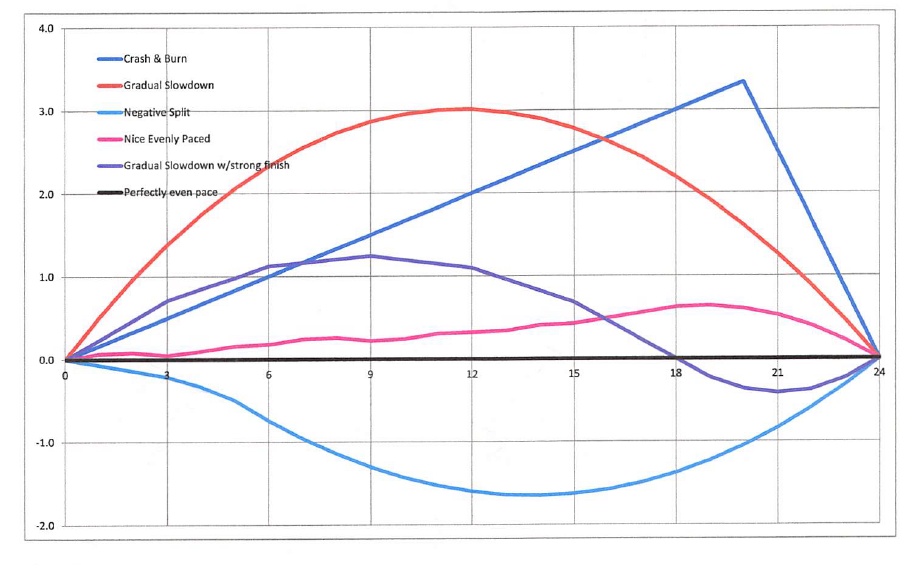
To Mike, the shape of a runner’s curve told the story of how the race fared for the runner more so than the end result. Curves don’t lie—they reflect the trajectory of the runner’s movement from start to finish.
Keep in mind that no particular pacing strategy is better than another for every runner. At the end of the day (both proverbially and literally), the number of miles a runner completes is what ultimately counts. A heavily front-loaded running style that puts miles in the bank during the first half with a planned “crash and burn” result in the second may very well lead to a record-breaking performance. Is it the optimal pacing strategy? Maybe, maybe not. Each runner has their own running style. It’s very difficult, if not impossible, to convert a heavy front loader into a negative split style of runner.
“Balls Out, Balls In” or “Balls In, Balls Out”
Probably the best way to understand the differences in pacing strategy is the following ultrarunning fable:
One day a top collegiate distance runner (we’ll call him David) who had also recently qualified for the Olympic marathon trials with a 2:17 marathon, asked a veteran ultrarunning coach what he needed to do to run 170+ miles in 24 hours to break Mike Morton’s American Record.
The grizzled coach narrowed his eyes at David and asked, “Balls out, Balls in? Or, Balls in, Balls out?”
David shook his head, perplexed. “Coach, I’m sorry, but I don’t understand what you’re asking.”
With a hint of exasperation, Coach replied, “Do you want to be like Mike, or like Olivier?”
Once again, David stood utterly confused.
Coach explained, “You see, son, Mike and Olivier had virtually the same raw speed for the standalone 100-mile distance, but each had a completely different pacing strategy for the 24-hour. Mike, at the 2012 24-hour World Championship, ran very aggressively from the start, splitting 100 miles in 13:06 when he broke the American Record with 172 miles.
“By comparison, at the 2019 24-hour World Championship, Olivier’s 100-mile split was much more conservative—actually fifty-two minutes slower—13:58 when he finished with 171.17 miles; only a mile behind Mike’s AR.” Coach showed David a chart (below) that laid out the second half marathon splits for both runners:
| Marathon | Miles | Mike Morton (Katowice, 172.458) | Olivier Leblond (Albi 2019, 171.178) | Approximate Difference (minutes) |
| 1 | 26.219 | 3:05:43 | 3:40:10 | 35 |
| 2 | 52.438 | 3:22:28 | 3:39:44 | 17 |
| 3 | 78.656 | 3:38:06 | 3:39:56 | 1 |
| 4 | 104.875 | 3:41:41 | 3:39:56 | -2 |
| 5 | 131.094 | 3:55:37 | 3:45:54 | -10 |
| 6 | 157.313 | 4:00:10 | 3:40:00 | -20 |
| last 13.1 | 170.413 | 1:57:42 | 1:48:15 | -9 |
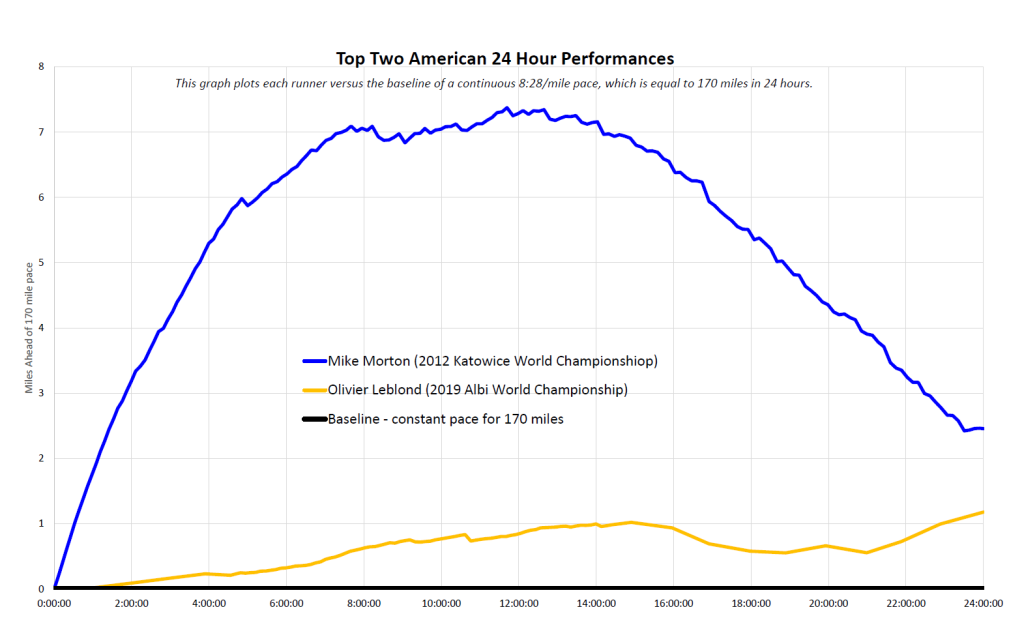
“You can see that Olivier would have been frequently lapping Mike the last 10 hours if they were in the same race,” Coach pointed out.
“Amazing,” David said. “But what does that have to do with…uh…you know…balls?”
Coach laughed. “No need to be embarrassed, son. The phrase ‘balls out’ has nothing to do with anatomy. It originated from the inner workings of the steam engine. Steam pressure and speed forced balls on either side of the engine to rise. At full speed, the two balls would fly outward. ‘Balls out’ means you’re running at full speed. If you do that at the beginning of the race, you’re running Balls out, Balls in—because you’ll have to slow down later in the race. The opposite strategy is—”
“Balls in, Balls out,” David finished, finally understanding. “Which pacing strategy hurts the most?”
Without hesitation, Coach replied, “Both hurt equally, son. There’s simply no easy way to run 170+ miles in 24 hours.”
“Pulling a Sorokin”
“The only thing that would hurt worse,” Coach warned, “would be for you to attempt to pull a Sorokin.”
Young David took the bait. “Pull a Sorokin? What does that mean?” “If you were impressed by the pacing strategies we’ve talked about, you should study Sorokin’s pacing when he broke YK’s world record. Compare Sorokin’s marathon splits to Mike’s and Olivier’s.”
| Marathon | Miles | Aleksandr Sorokin (Pabianice 2021, 192.252) |
| 1 | 26.219 | 3:13:56 |
| 2 | 52.438 | 3:13:41 |
| 3 | 78.656 | 3:11:46 |
| 4 | 104.875 | 3:12:40 |
| 5 | 131.094 | 3:14:30 |
| 6 | 157.313 | 3:17:29 |
| 7 | 183.531 | 3:21:57 |
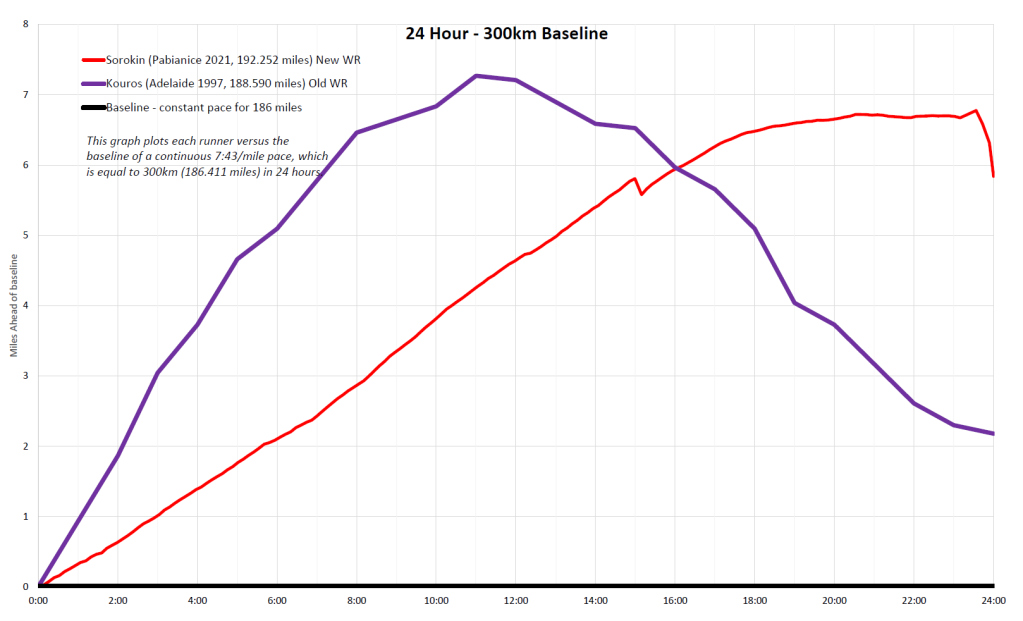
“That’s crazy, Coach!” cried David, wide-eyed. “Sorokin ran 7 marathons in virtually the same time between 3:11 – 3:21 with only a slight slow down during the last split!” Coach nodded in full agreement. Look at Sorokin’s graph compared to the Golden Greek—notice that at the witching hour (16) Yiannis begins his fade while Sorokin remains in complete control. Son, that is badass.
“Now you’ve just got to figure out your own pacing strategy.”
Slowest 100 Mile Split Needed to Achieve Mileage Bracket
What is the slowest actual 100-mile splits for each mileage bracket based on historical performances?
- 170 =13:58 (Olivier LeBlond)
- 160 =14:45 (Harvey Lewis)
- 152 =15:38 (Anders Tysk)
Desert Solstice Entrants
Desert Solstice’s eclectic diverse field has something for everyone:
- a current 24-hour World Record holder,
- 2nd place Team USA & 7th overall male finisher at the 2019 24-hour World Championship in Albi, France
- the trans con FKT (fastest known time)
- the ready-for-prime-time kid
- two 2-time Desert Solstice winners,
- former 24-hour American Record,
- a Western States champion (and doctor)
- international studs and studette
- God, family, ultra
- A Harvard professor and physicist
- a Princeton mathematician
- the Enigma.
Comparative Statistics of Desert Solstice Entrants who have run 140+miles
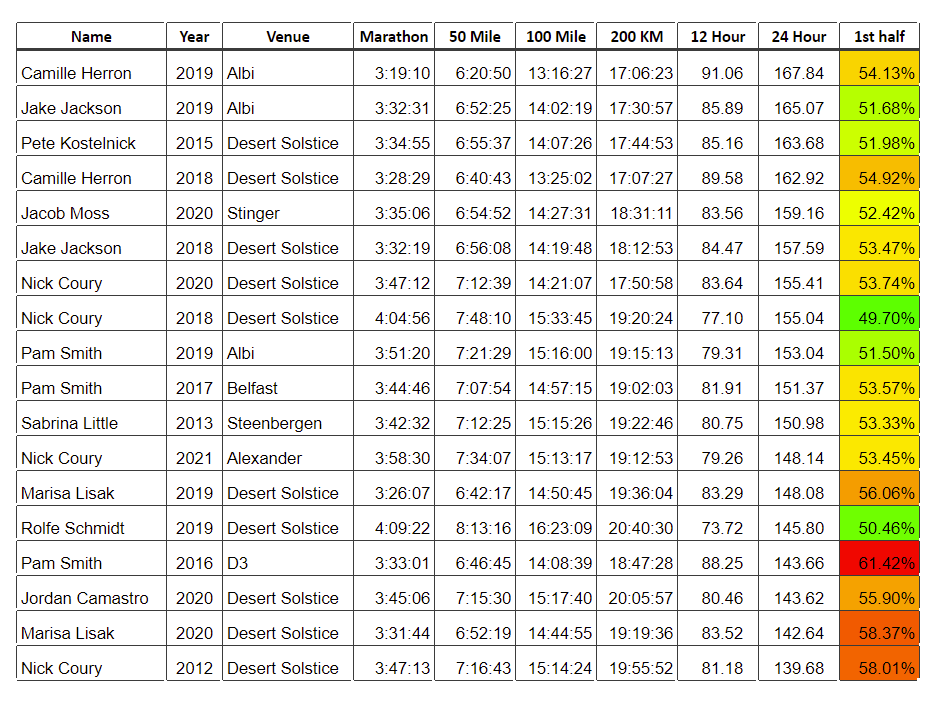
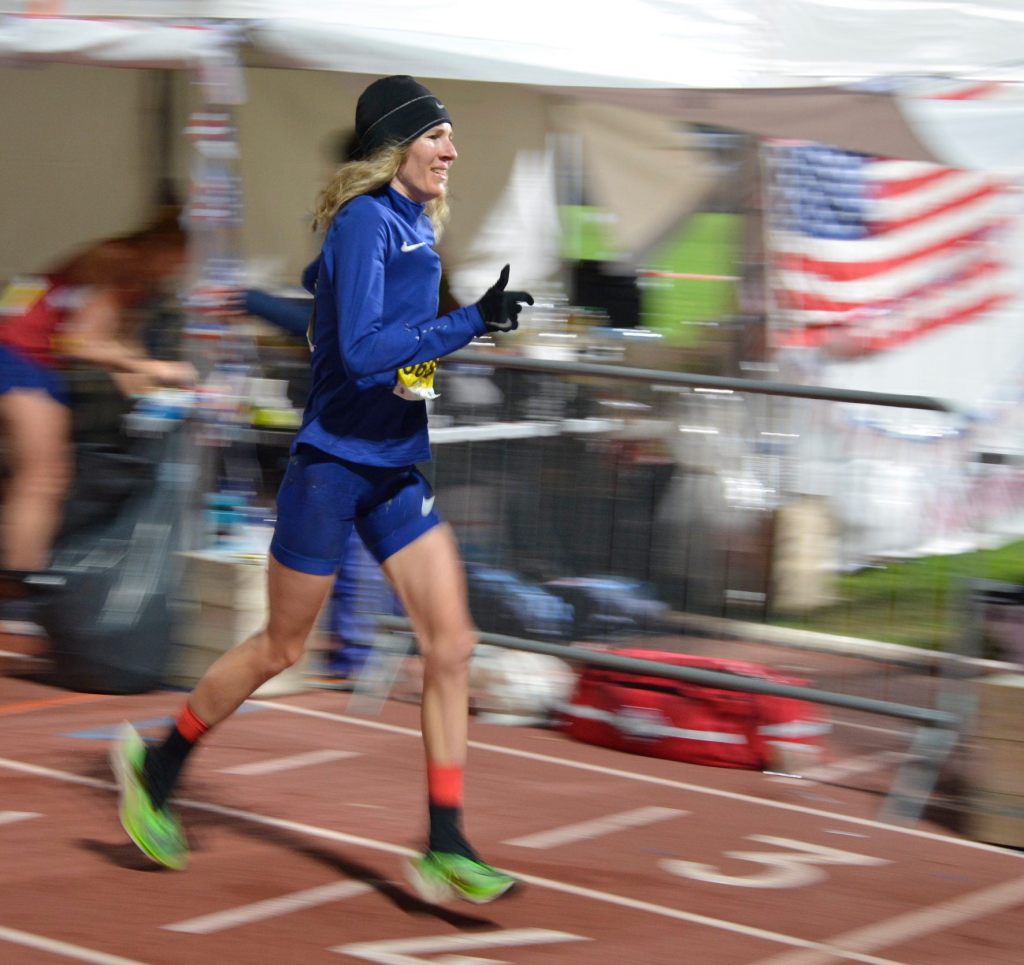
Camille Herron (167.84/12:42) is the current 24-hour Women’s World Record holder (167.84 miles). Her 100-mile personal best (12:42) and 24-hour best 167 miles are both the top marks for the women and men’s field. Does Camille have the leg speed to break Mike Morton’s overall American Record of 172.07 miles? Absolutely. In fact, her 100-mile time is actually better than Mike’s best 100-mile time (13:06) and is almost identical to Olivier LeBlond’s 100 miles (12:41).
Compare the data points for Mike, Olivier and Camille’s top performances:
| Name | Venue & Year | Marathon | 50 Mile | 100 Mile | 12 Hour | 200 KM | 24 Hour |
| Mike Morton | Katowice 2012 WC | 3:05:48 | 6:09:38 | 13:06:12 | 92.3 | 16:40:05 | 172.46 |
| Olivier Leblond | Albi 2019 WC | 3:40:11 | 6:59:40 | 13:58:38 | 85.84 | 17:27:04 | 171.18 |
| Camille Herron | Albi 2019 WC | 3:19:10 | 6:20:50 | 13:16:27 | 91.06 | 17:06:23 | 167.84 |
It will be intriguing to see if Camille experiments with her pacing strategy and tries a curve closer to Olivier’s compared to Mike’s. As the chart indicates, Camille could run almost 40 minutes slower the first fifty miles and still theoretically target the AR.
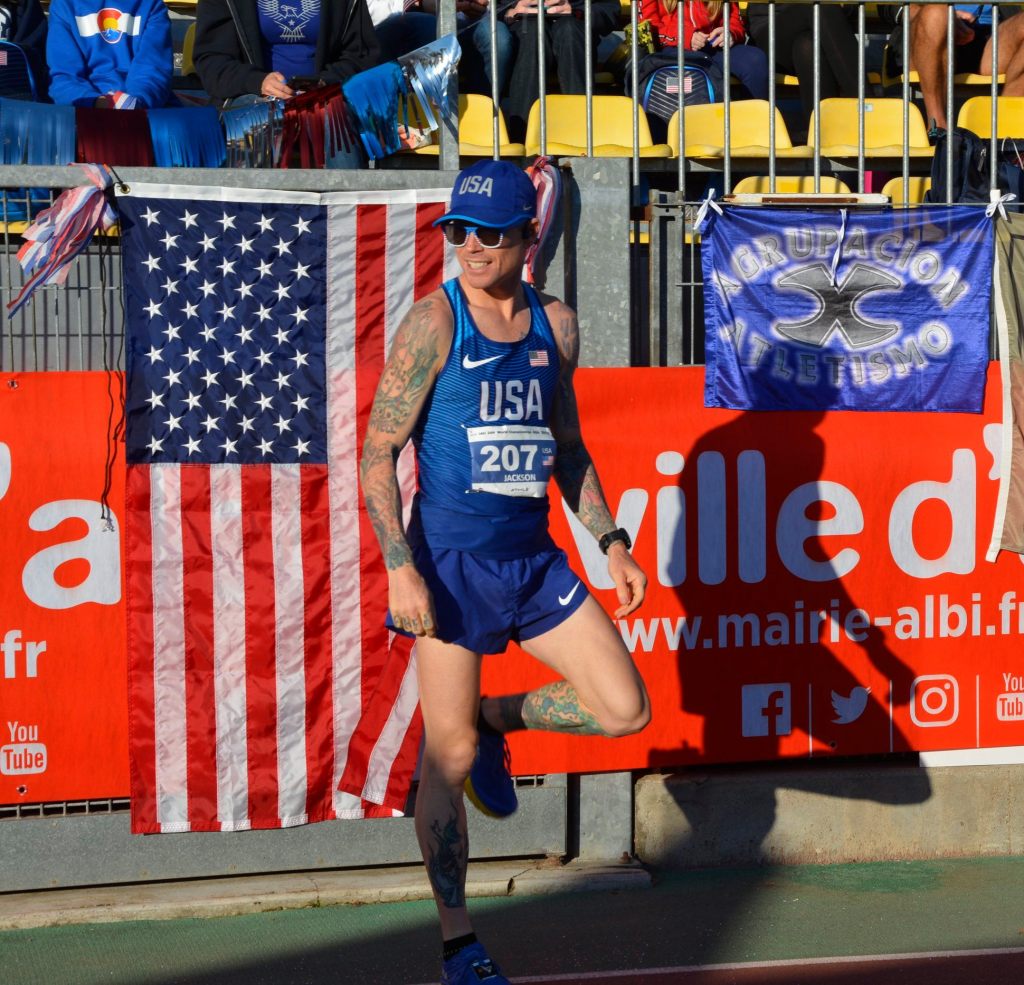
Jacob “Jake” Jackson. Gotta love Jake! With all his tats and beard when he’s got one, Jake looks like a cross between a Motley Crue band member and a West Coast grunge trail runner (which he is). His passion is trail running (egad!) more than the track, but his 165.07 (2nd place USA team, 7th place overall male finisher) at the 2019 IAU 24-hour World Championship was badass and helped team USA win the gold medal. Jake’s a bit odd; he chews peppermint gum while running. Go figure. 2:42 marathoner to boot. If things go well, don’t be surprised to see Jake achieve a new personal best in the upper 160s.
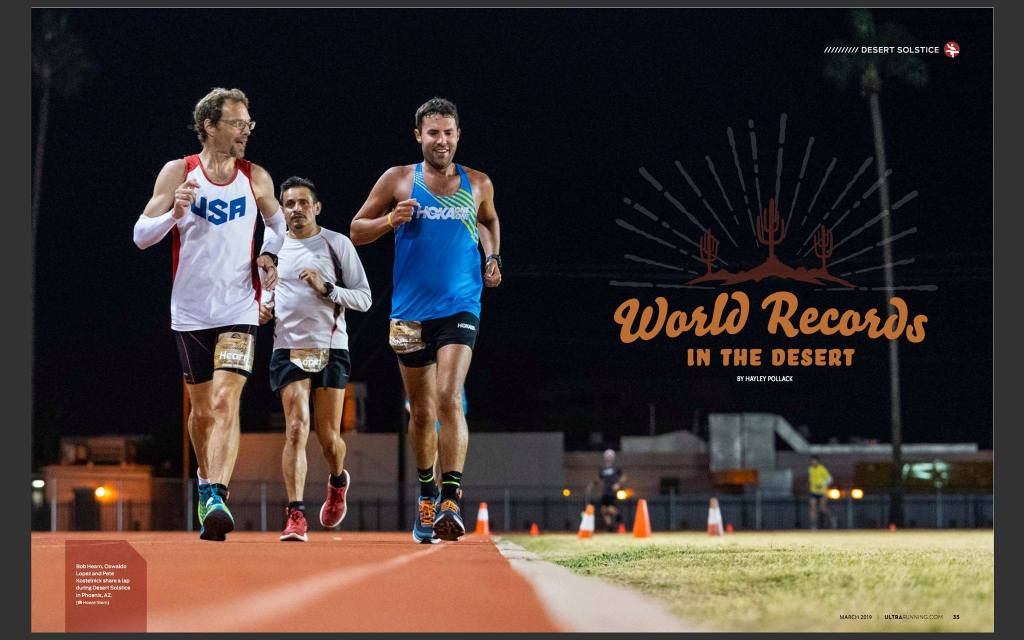
Pete Kostelnick. Best known for being the fastest person by foot ever to cross the United States coast to coast (3,067 miles), in a blistering 42 days, 6 hours and 30 minutes. He’s also a two-time Badwater 135 mile champion and is the current Desert Solstice 24-hour course record holder with 163.68 miles. Pete is signed up to run the 6-day event in a few weeks at the prestigious Across the Years (also hosted by Aravaipa Running). I presume Pete is using this race as a high-quality tune up for his upcoming ATY 6- day race. Pete ran a 14:40 100-miler earlier this year and still has the youth (age 34) and talent to run even further in the 24 hour.
Two 2-time Desert Solstice winners: Nick Coury (2018 & 2020) and Marisa Lisak (2019 & 2020):
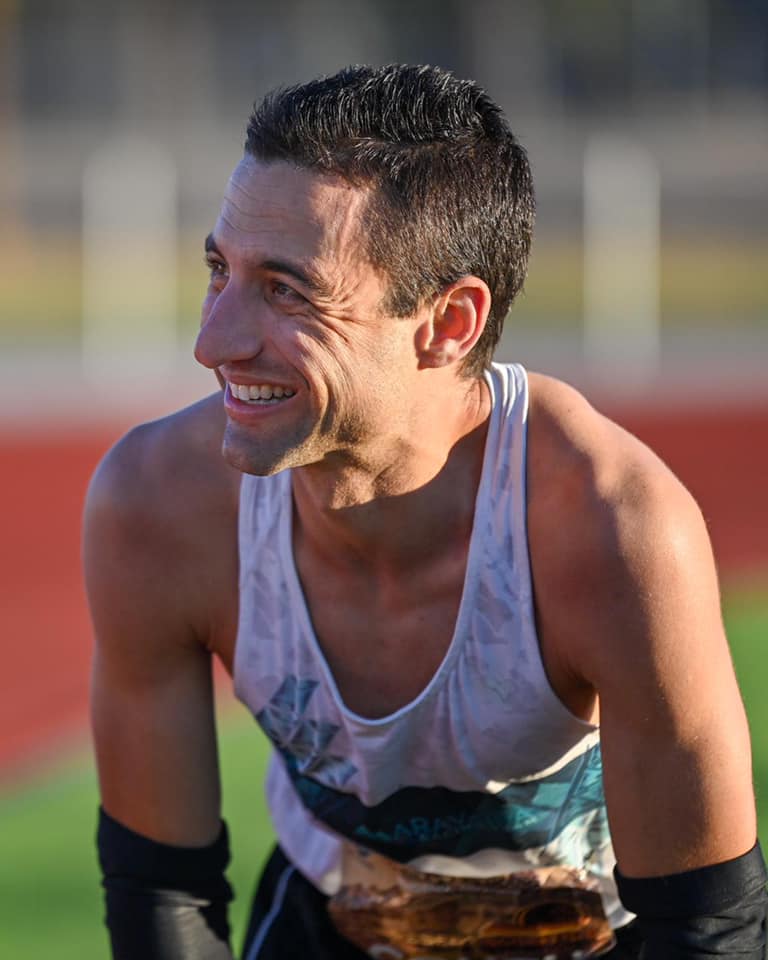
Nick Coury is undoubtedly primed for a personal best based on his recent improvement in his 100-mile time. Earlier this year at the Six Days in the Dome indoor track event, Nick ran a personal best (13:21) 100 mile split. He also ran a controlled 148 miles at a 24-hour event, without crew, under poor weather conditions. I anticipate Nick bumping his personal best from 155.41 to a low-to-mid 160 number. Other than Bob Hearn, Nick is (in my opinion) perhaps the best at executing an even paced race plan. Nick’s improved 100 speed should give him substantial confidence to plan for a slightly faster race pace than his prior Desert Solstices. 155.41 miles at a perfectly even pace is 9:16 per mile or 2:18 per 400-meter lap. 162 miles at a perfectly even pace is 8:53 per mile or 2:12 per 400-meter lap.
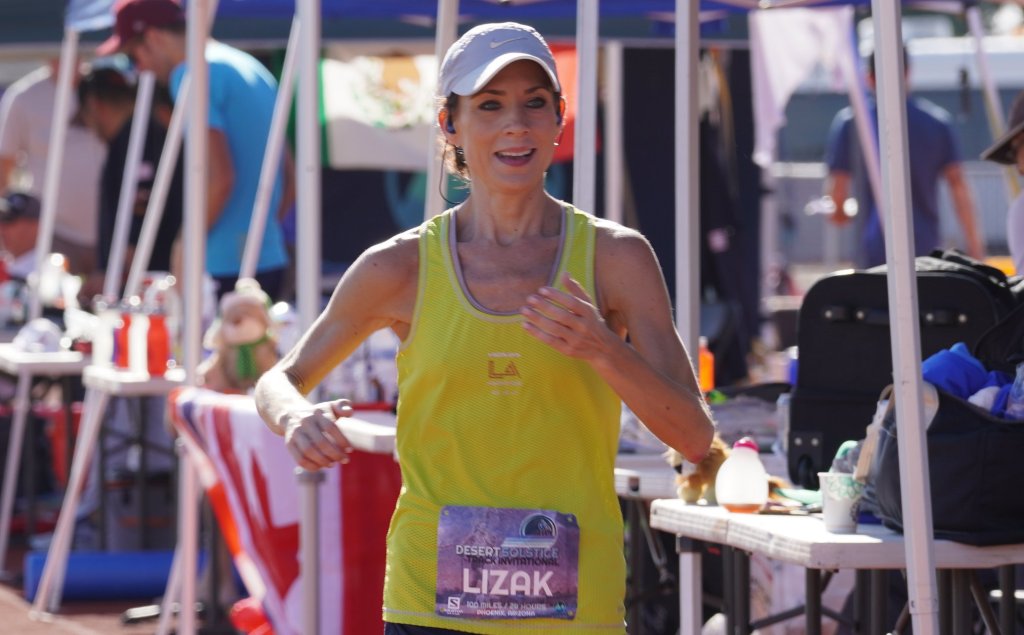
Marisa Lisak (148.08 24-hour personal best/14:44 100 mile). Marisa’s 100-mile personal best is about 3 minutes slower than my best (14:41) when I ran 156.62 miles at the 2012 Desert Solstice. With her experience and her solid 48-hour performances, I wouldn’t be surprised to see her set a new personal best in the low 150s.
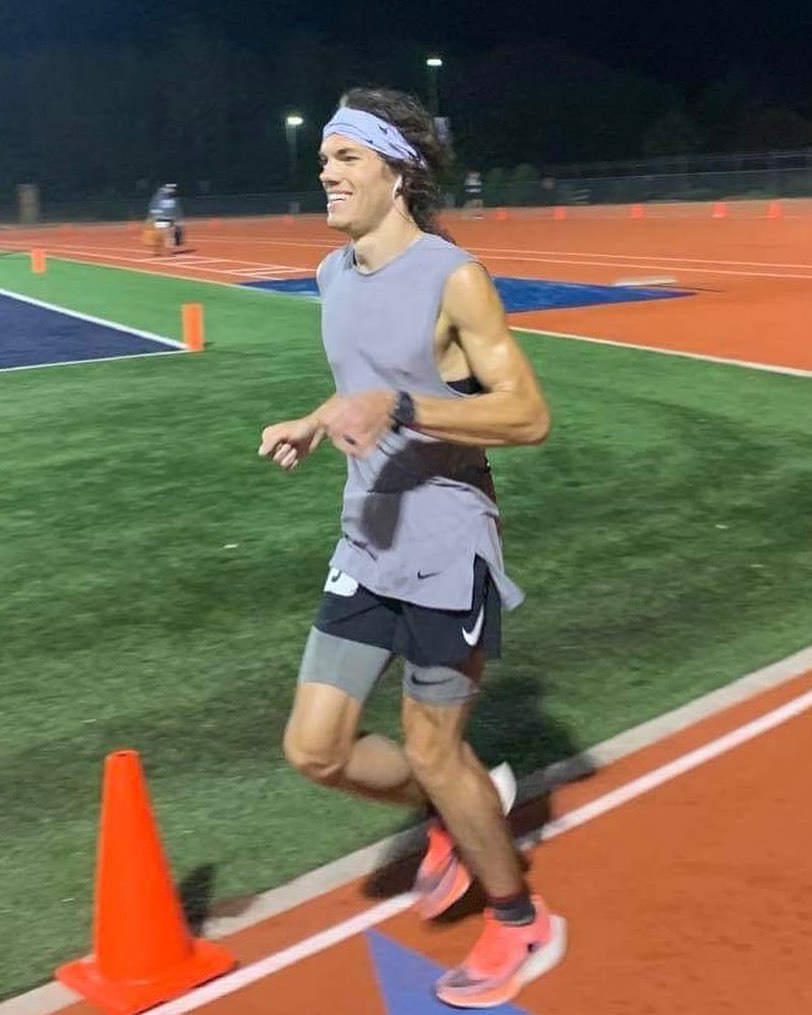
Jacob Moss. Out of the way, Deion! Here comes Jacob (age 28) who is ready for Prime Time, baby! Jacob is a fellow Southerner/South Carolinite hailing from Charleston SC and has become a close friend of my wife’s (Kelley) and mine, running various local low country races. Over the past few years, Jacob has rapidly progressed in ultrarunning like no other. Within the past 13 months, Jacob has run: (1) a 12:54 (100 -mile) personal best at Tunnel Hill, (2) a 13:25 100-miler at the Six Days in the Dome; and (3) a 159.16 mile 24-hour at the Stinger 24-hour event outside of Atlanta, Georgia. Passionate, inquisitive, and dedicated to succeeding as an ultrarunner, Jacob is definitely not shy about targeting big goals. His recent substantial improvements in his 100-mile time should give him confidence with targeting a mid- 160s 24-hour. BTW, his 13:25 2nd place finish at the Dome was 4 minutes behind the winner who was none other than Nick Coury.
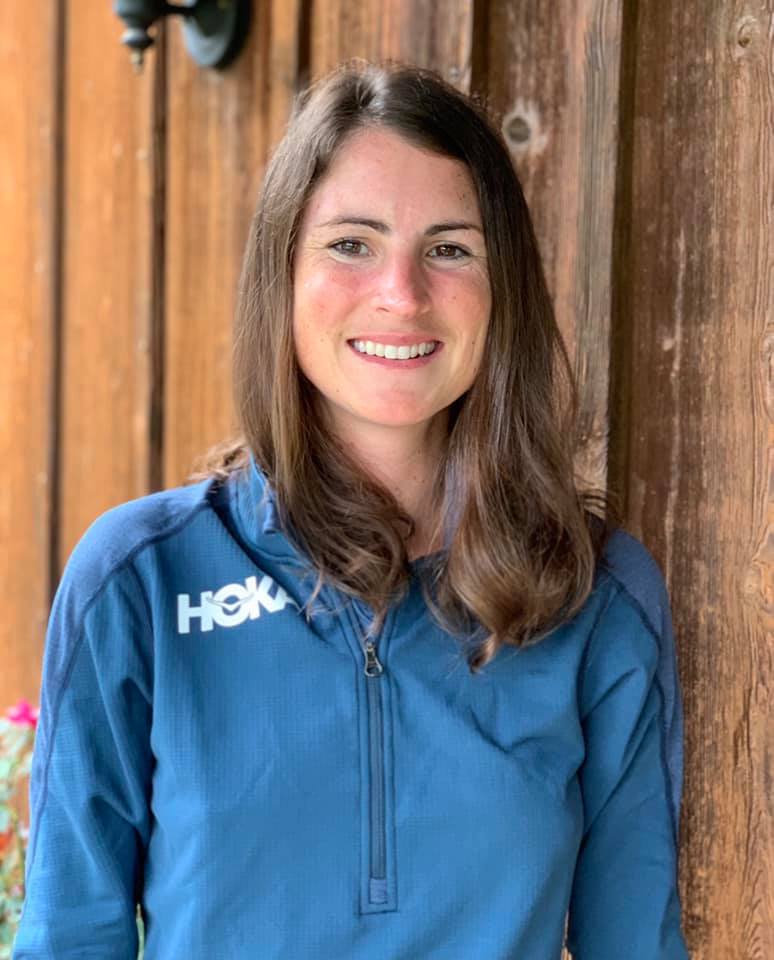
Sabrina Little (152.03/14:55) is a phenomenal runner. In 2013, Sabrina ran 152.03 miles, won the individual silver medal at the IAU World Championship, led Team USA to the gold medal and broke the 24-hour American Record. It’s been a few years since she has focused on the 24-hour, so I’m super excited over her return. At age 35, she’s plenty young, with years of competitive running potential. A personal best is certainly in play if that’s her goal.
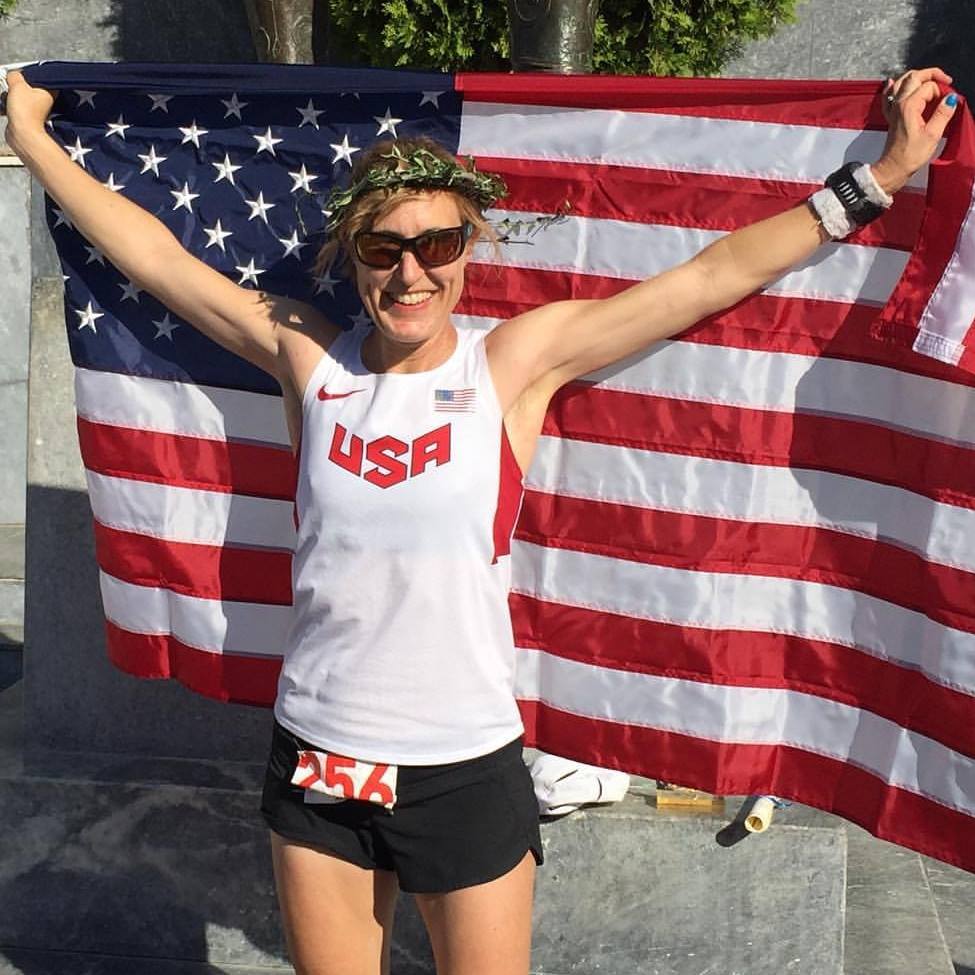
Pam Smith (153.04/14:11) (age 47). The Doctor is in the house! Dr. Smith, a pathologist living in Salem, Oregon, ran cross country and track at Williams College in Massachusetts, then completed medical school at Temple University as the youngest person ever to graduate from Temple Medical School.
Her running career has been just as impressive. Pam finished 4th in the World at the 2019 24-hour IAU World Championship with a personal best 153.04. She was a major inspiration to me when I ran my 156-mile performance at Desert Solstice in 2012. She and I ping-ponged much of the race with her splitting 100 miles in 15:01, right behind my 14:41. The following year at DS, she crushed the 100-mile running 14:11 which is 30 minutes better than my personal best. If the desire still burns within her, she is young enough and has the ingredients to run even further in the 24-hour. She has accomplished virtually everything an ultrarunner could ever want, including but not limited to the following performances:
- 2013 Champion Western States
- 2nd place at the Spartathlon
- 5th place (2012 – Seragno), 10th place (2014 Qatar) & 12th place (2016-Los Alcazares) 100k IAU World Championships
- 4th place (20190-Brive) & 5th place (Belfast) IAU 24-hour World Championships
- 2nd place (JFK 50-2010)
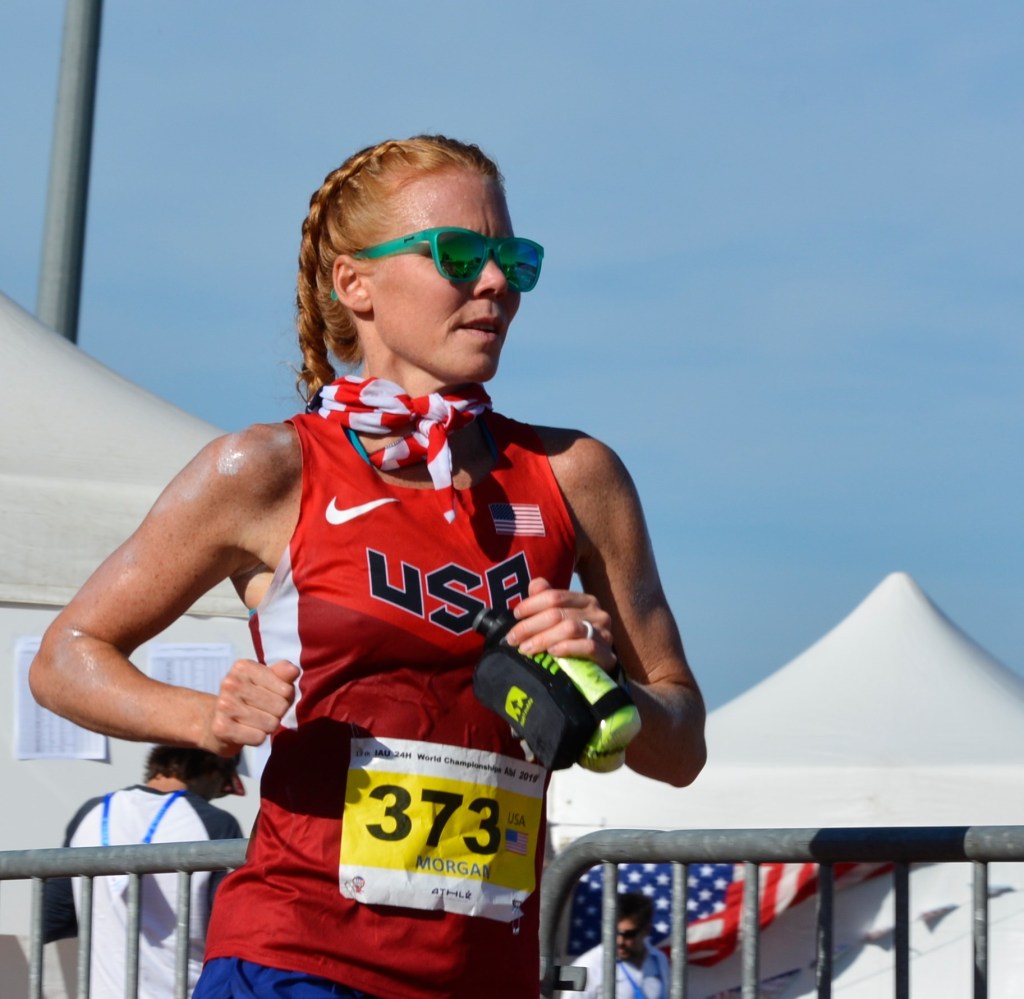
Micah Morgan (148.68/14:44). Micah finished 3rd on Team USA and 8th in the world at the 2019 24-hour World Championship in Albi, France, with a sparkling 148.68 miles. She ran two sub-15 100-milers this year, a harbinger of priming for a personal best. I see mid 150s happening if Micah has a good day (and night).
International Studs & Studette:
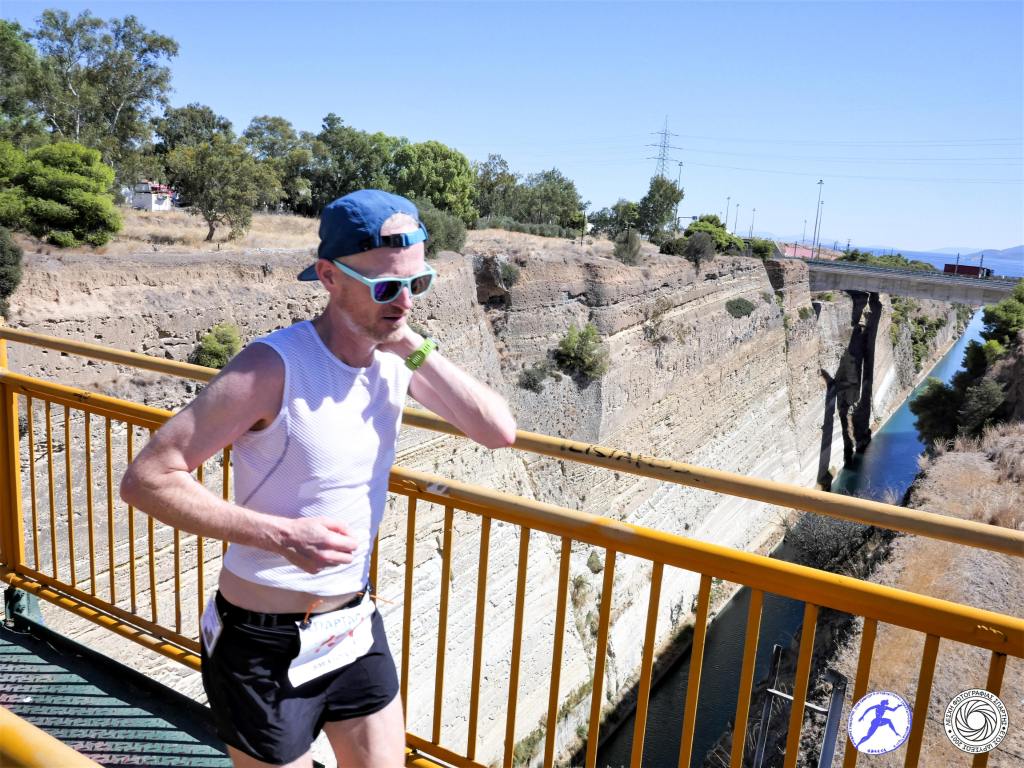
Simen Holvik (157.42/14:06). This Norwegian runner had an impressive 2020, running his personal best 157.42 miles 24 hour at the “24 Hours of Hell” just in front of Theresa Falk (2nd place) and Bjorn Tore Kronen Taranger (3rd place). Simen’s 100-mile split was 14:42. According to Aravaipa, in July 2021 Simen set the FKT for the 2600 km crossing of Norway. Additionally, he finished 20th at the Spartathlon in 27:48, about 43 minutes behind Marisa Lizak and about an hour ahead of Bob Hearn. Desert Solstice should be an ideal venue and environment for Simen to get a new personal best—maybe even see 160.
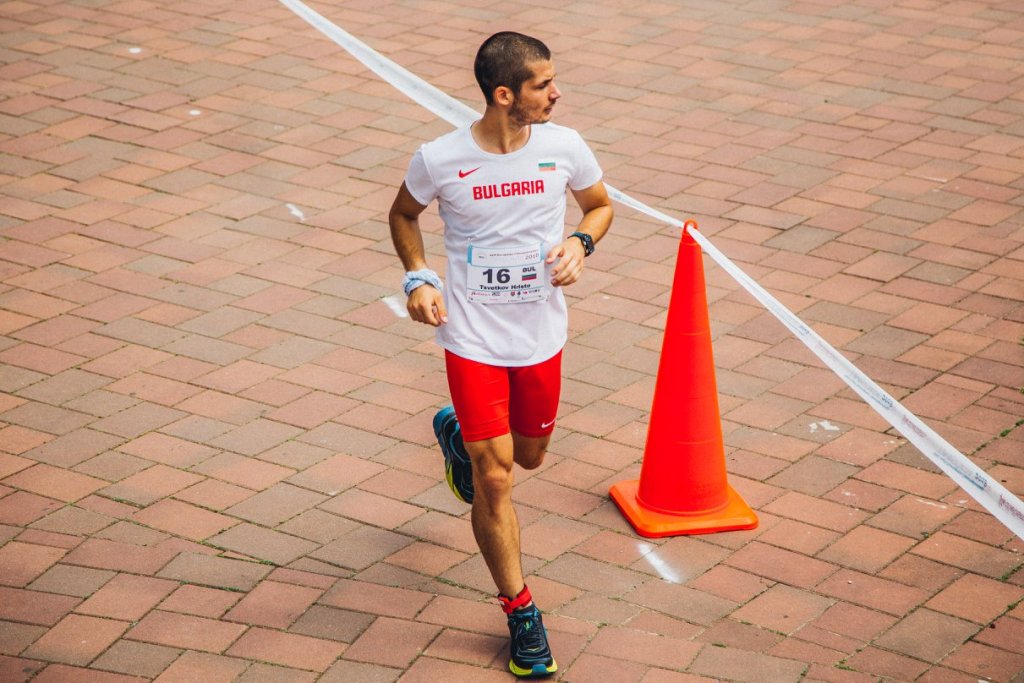
Hristo Tsvetkov (153.04/12:48). 27-year-old youngster from Bulgaria ran his 12:48 personal best 100-miler less than 4 months ago. Look out for those ultrarunners from Eastern Europe—Lithuania, Ukraine, Romania, Czech, Hungary, Slovakia, Lithuania, Poland, Ukraine, etc. They are hardcore. Think I’m joking? Check out the current top four 24-hour performances for 2021:
1. Aleksandr Sorokin 309.39 (km) Lithuania
2. Andril Tkachuk 295.36 (km) Ukraine
3. Iulian Filipov 277.47 (km) Romania
4. Andrzej Piotrowki 272.60 (km) Poland
I anticipate a substantial breakout personal best from Hristo at DS. Don’t be surprised to see him in the mix for the podium.
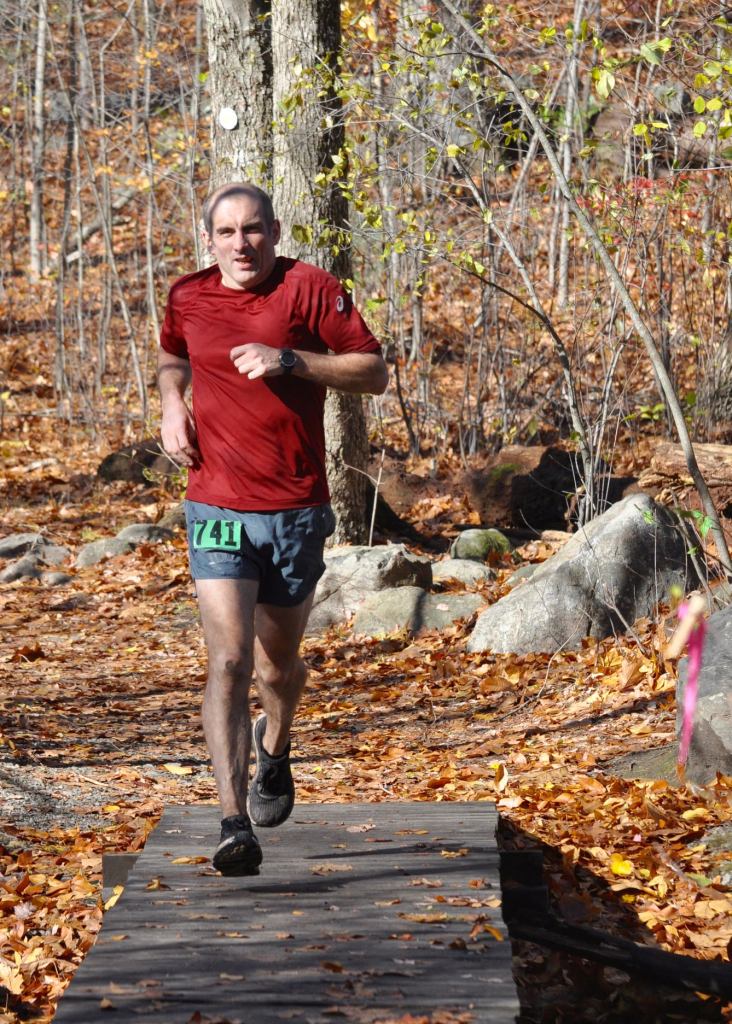
Padraig Mullins (142.43/15:35). My good Irish friend who also happens to be the biggest trash talker about my race prediction skills. Padraig has been on several Irish national teams including their 100k team selected earlier this year, as well as the 2019 24-hour team that competed in the IAU 24-hour World Championship in Albi, France. Padraig ran a 15:35 100-miles at the Six Days in the Dome in June 2021. If things go as planned, Padraig is capable of hitting a mid to high 140s mark. Padraig, pal, count your blessings, as what you’ve called my “kiss of death podium pick” will not be bestowed upon you this year.
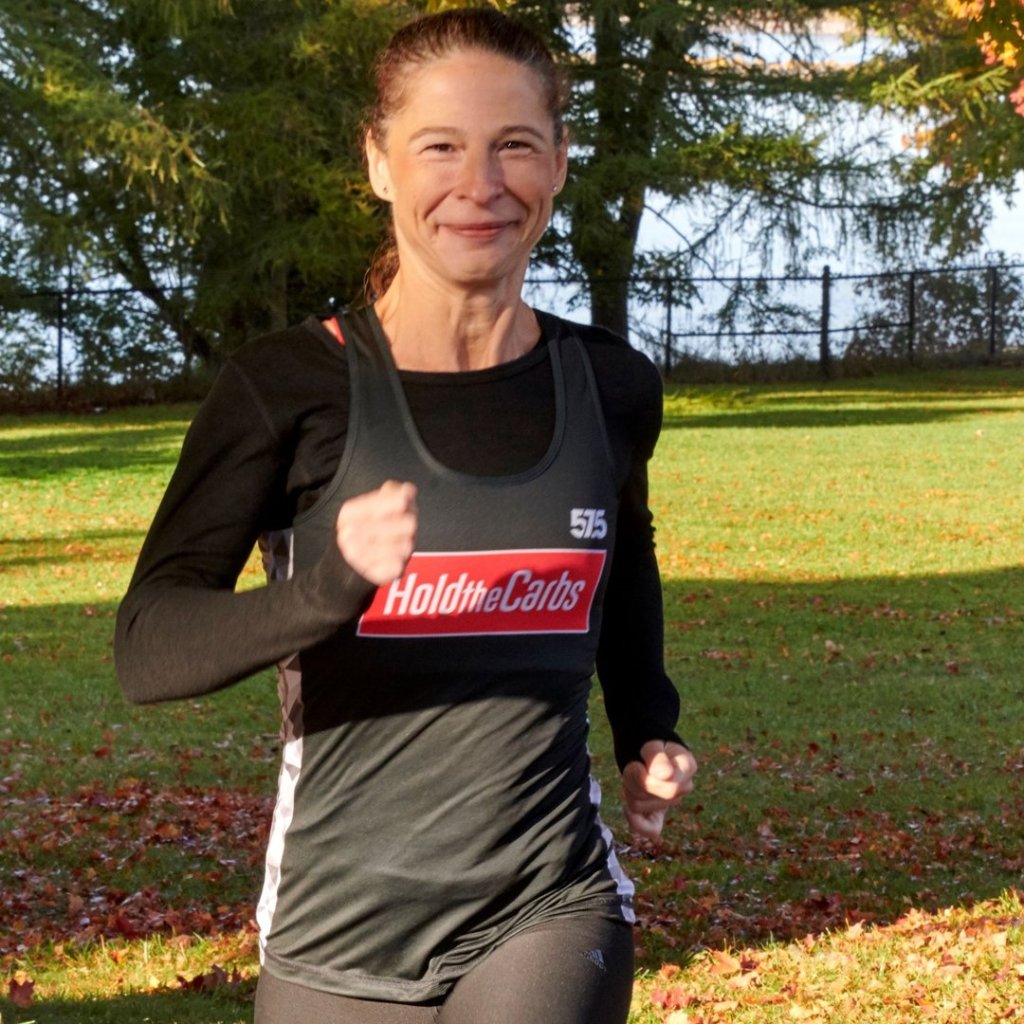
Viktoria Brown (132/15:24). Born in Hungary and residing in Canada, this elite triathlete only recently started running ultras, but has already set several Canadian ultra-records. Viktoria’s 15:24 100-mile effort earlier this year is indicative of her ability to go much further than 132 miles in 24 hours. She is super tough, too. I watched her withstand significant muscular injuries (anterior tibialis tendonitis) in her 6-day debut that would have stopped almost every ultrarunner I know. Her performance reminded me of the famous battle scene between Arthur and the Black Knight in the movie Monty Python & The Holy Grail, where Arthur severs the Black Knight’s right arm and the Black Knight responds, “’Tis but a scratch.” Arthur then cuts off the Black Knights left arm and exclaims, “Look, you’ve got no arms left!” The Black Knight responds, “It’s just a flesh wound.” With similar persistence, Viktoria ended up breaking the Canadian 48- and 72-hour marks—an astounding testament to her toughness and determination.
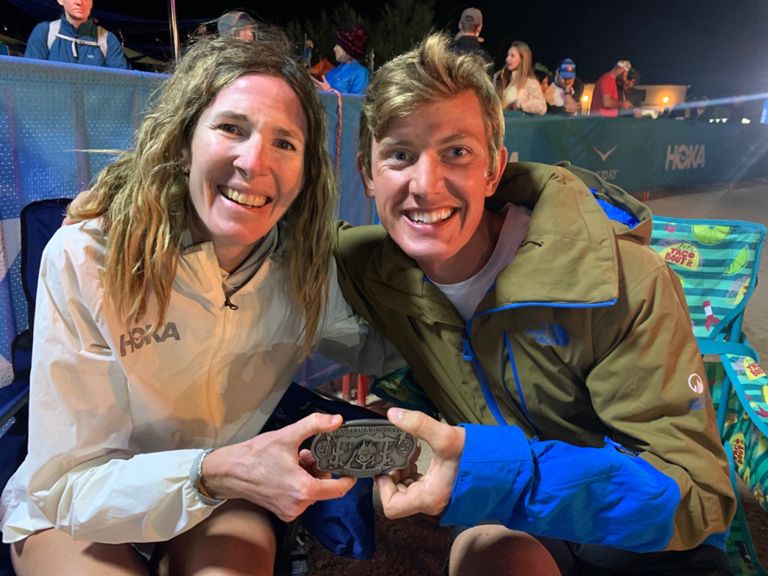
Arlen Glick (4-hour debut/12:57). He’s the hottest 100-mile runner on the planet in 2021 with four super-fast 100s (13:14, 14:15, 15:22 & 13:22) for the year. Arlen has won an amazing nine out of the ten 100-mile races he has entered. His only loss was to Taggart Vanetten at Tunnel Hill, but he did set a personal best of 12:57. To get insight on Arlen, I listened to podcasts he did with Run the Riot and Ridge RUNers Live. Interesting tidbits: Arlen, age 28, has Strava but no other social media. Born and raised in Massillon, Ohio, he is a devout, 5th-generation Mennonite who lives with his parents, was homeschooled, and works in the family business. His siblings crew him and are very efficient in doing so. He totaled only 8 minutes of down time at Tunnel Hill, primarily for stretching. He rarely listens to music during his runs, but when he does, it’s gospel music. His priorities in life are God, family, and, as of late, winning 100-mile races.
In learning about Arlen, I flashed back to my own childhood and times spent at my grandparents’ farmhouse in Burton, Ohio, a community where horse-drawn buggies are driven by bearded men in dark clothes with suspenders and broad-brimmed hats. My grandfather talked about the residents of neighboring farms, describing to me the Amish/Mennonite way of life, generally without technology, automobiles or even modern farming equipment. Did the natural simplicity of his upbringing (without texts, email and zoom meetings) endow Arlen with the ability to super-focus during ultra races, and his old-fashioned farm work give him super stamina?
Time will tell. Arlen’s running skills are well worth watching. His top end 100-mile speed is virtually identical to Jacob Moss and is only minutes way from Camille and Olivier’s personal bests. Clearly Arlen is comfortable trailing a group of elites but has no problem running in the front if the opportunity presents itself. During the Ridge Runner’s podcast, co-guest Traci Falbo recommended Arlen run the Desert Solstice 24 hour, slow down to an even pace, and make the U.S. 24-hour team.
If Desert Solstice were a 100-mile race, Arlen would be my prohibitive favorite. There is, however, a massive difference between the 100 mile and the 24-hour. Desert Solstice track is littered with the dashed hopes of many elite 100-mile phenoms that crashed and burned over the second half of the race. Arlen will have to run 7 hours more than his longest effort to date. I’ll be particularly interested in how he fares from hour 16-20. Knocking it out of the park is daunting in a 24-hour debut, especially if Desert Solstice is the setting. Worse-case scenario, DS will be an education. Arlen is definitely a wildcard, though, and undoubtedly has the raw speed to hit a big number and make the podium.
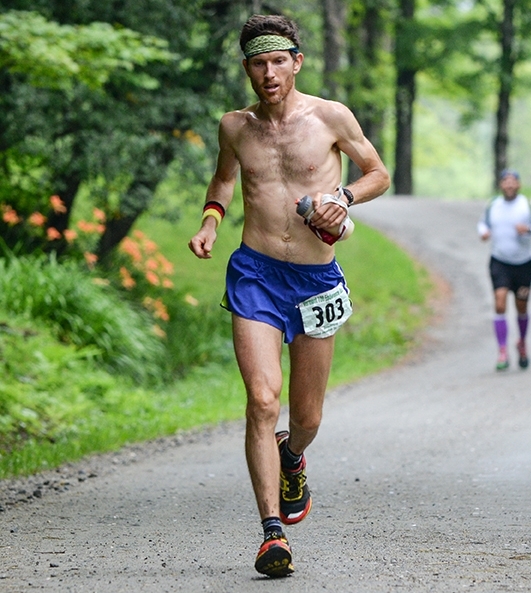
Scott Traer. Scott qualified for the 2013 24-hour team with 140.41 miles and would have been my teammate on our gold medal winning effort, but he declined to participate in the World Championship held in Steenbergen. According to a 2014 interview, Traer objected to Nike’s exclusive sponsorship policy, believing that the USATF was exploiting runners. (Perhaps to his point, a Runner’s World article on November 30 reported that a grand jury subpoenaed documents from Nike and the USTAF as part of an apparent ongoing criminal investigation by the U.S. Attorney’s Office for the District of Columbia.)
In 2021, Scott ran two sub 14:00 100-mile performances—a great indicator of his potential to put up a substantial number in the 24-hour. Don’t be surprised if he shatters his prior personal best and sees the 150s. If Scott qualifies for the 24-hour team again, it will be interesting to see if he accepts the spot this time around.
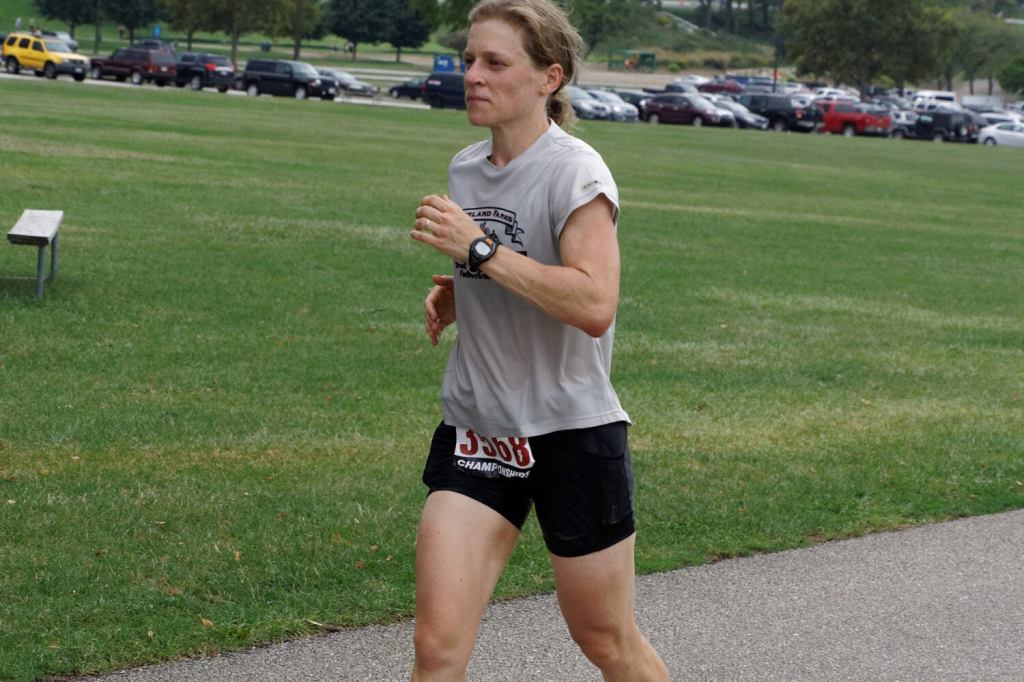
Jenny Hoffman (142.02/15:55) (age 43). Ummm…Jenny’s a Harvard professor and a world class physicist. [full stop]. Here’s a snippet from her CV: Hoffman’s research program combines molecular beam epitaxy and scanning probe microscopy to image and manipulate the nanoscale electronic and magnetic properties of quantum materials.
Summary of Jenny Hoffman’s education:
• Ph.D. in Physics, University of California, Berkeley, 2003
Thesis: “A Search for Alternative Electronic Order in the High Temperature Superconductor”
• M.A. in Physics, University of California, Berkeley, 5/2001
• B.A. magna cum laude with Highest Honors in Physics, Harvard University, 1999
Seriously, do we even need to talk about Jenny’s running skills? And here I thought Bob Hearn was the smartest ultrarunner I knew. Jenny’s running CV is almost as impressive as her education accomplishments: in 2017, she qualified for the US 24-hour Team and competed in the IAU World Championship in Belfast. She has a 142.02 personal best in the 24-hour and is a 3-time national champion, having won the North Coast 24 in 2014, 2015 and 2016. A couple years ago, Jenny missed breaking the women’s Trans USA coast to coast crossing FKT when her knee gave out—after she’d completed 2,560 miles with only 460 miles left. She had been averaging 61 miles per day and was on pace to break the record by nearly 6 days. She is also an accomplished trail runner. In 2004 she finished 1st female and 3rd overall at the Superior Sawtooth 100. Jenny has oodles of 24-hour experience, having run 126.76 at the Across the Years 24 way back in 2005. Her 15:55 100-mile performance this year at Pine Creek Challenge says she still has the skill set to achieve a personal best.
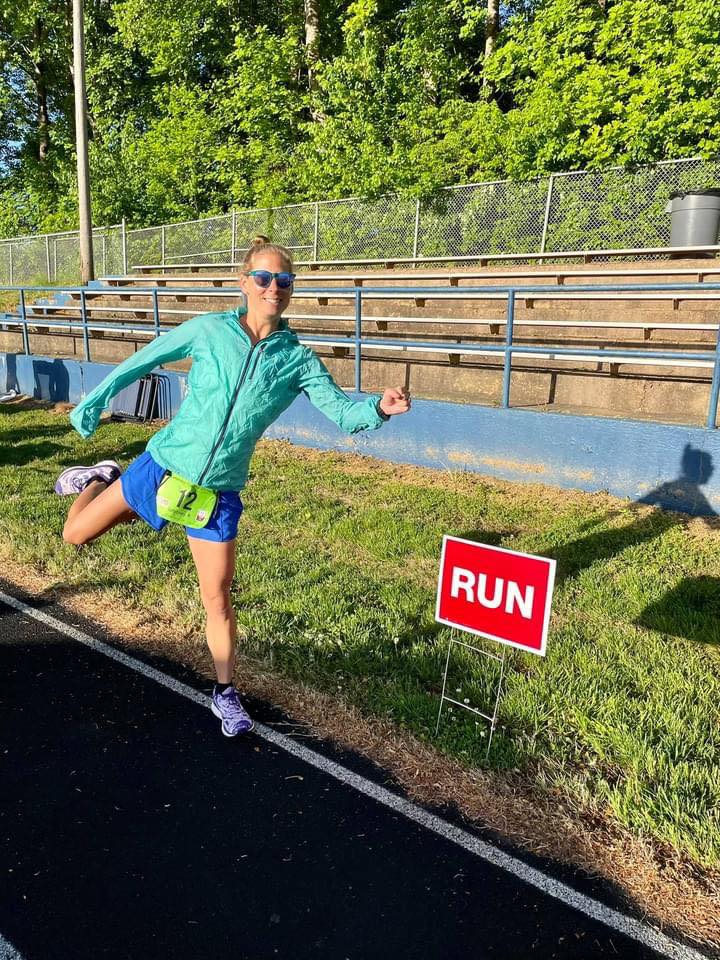
Whitney Richman (139.69/16:13). Whitney qualified for the US 24 hour team that was supposed to compete in the World Championship earlier this year in Bucharest, Romania. Unfortunately, the IAU was forced to cancel the event. Hopefully she will be able to make the 2023 team that is scheduled to compete in Chinese Tapei in December 2023.
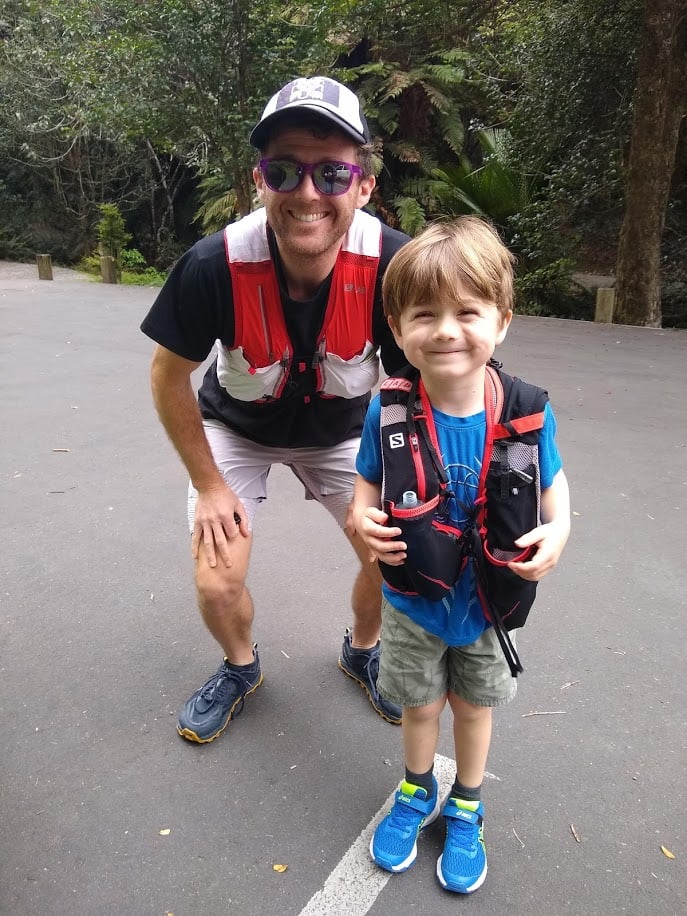
Matthew Urbanski (24 debut/14:04). Matthew is a running coach and prolific 100 miler who can run technical mountains as well as the track. A world traveler, he has recently been running ultras in Australia, New Zealand. He has wheels:
- 15:26 3rd place in 2018 Umstead 100
- 4th place 14:55 in 2017 Javelina Jundred
- 3rd place 14:04 in 2017 Rocky Raccoon
- 10th place at 2019 Leadville
- 2nd at 2017 Cascade Crest 100
- Has run Chamonix both CCC & UTMB;
A 2:33 marathoner-collegiate runner at University of Cincinnati, Matthew ran low15-minute 5ks and 32 minute 10ks. His experience, diversity and speed promise huge potential. It will be fascinating to see how his 24-hour track debut goes. He’s a wildcard, for sure.
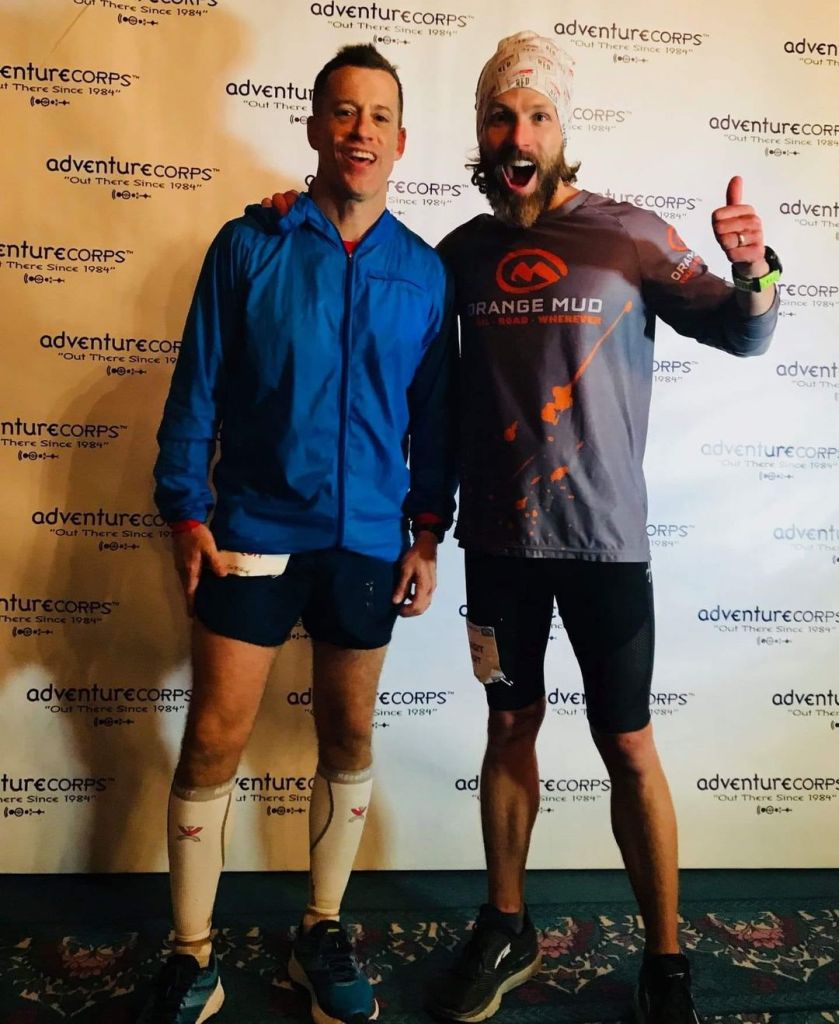
Dan McHugh. (14:34). Hopefully Dan will represent the 50+ age group well. He definitely still has the motor—14:34, 4th place finish at the 2020 Jackpot Ultra Festival 100 mile along with a 15:22 performance at the 2019 Tunnel Hill 100. He tried running the Alexander 24-hour event earlier this year, but weather conditions were less than ideal. Would love to see him hang a 140+ mile performance at DS.
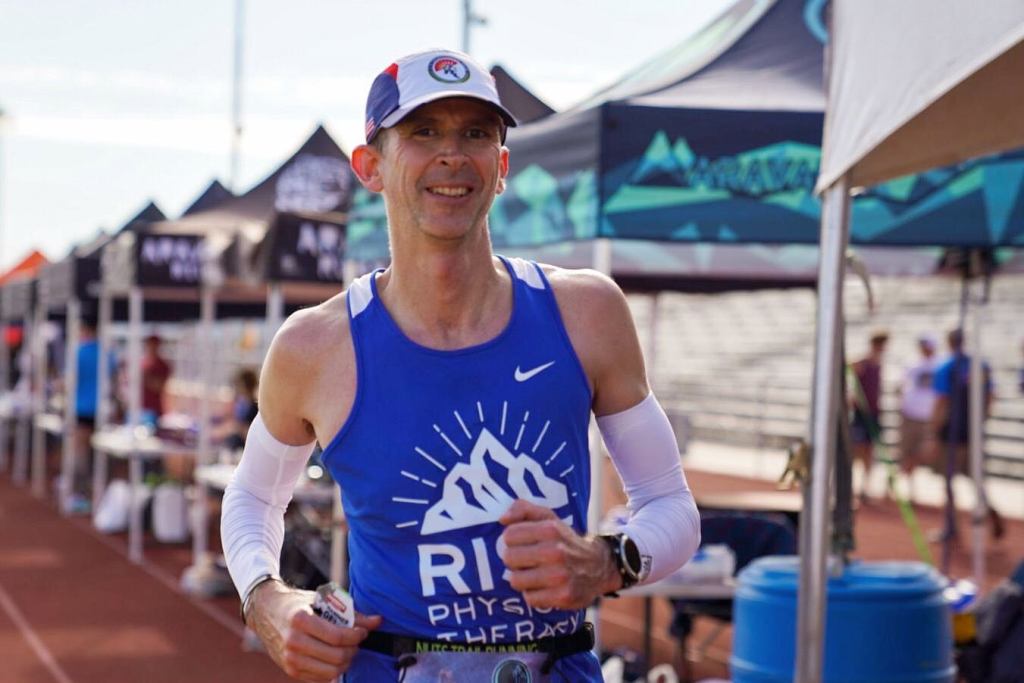
Rolfe Schmidt (145.8/15:42). Rolfe won the 2019 Desert Solstice 24-hour and met the qualifying mark for the USA 24-hour Team, holding the #5 slot. His 145.8-mile qualifier, however, was eventually eclipsed by Nick Coury (155.41) and Ryan Montgomery (154.71) at last year’s Desert Solstice. Almost as impressive, Rolfe is a serious mathematician who graduated from Princeton University.
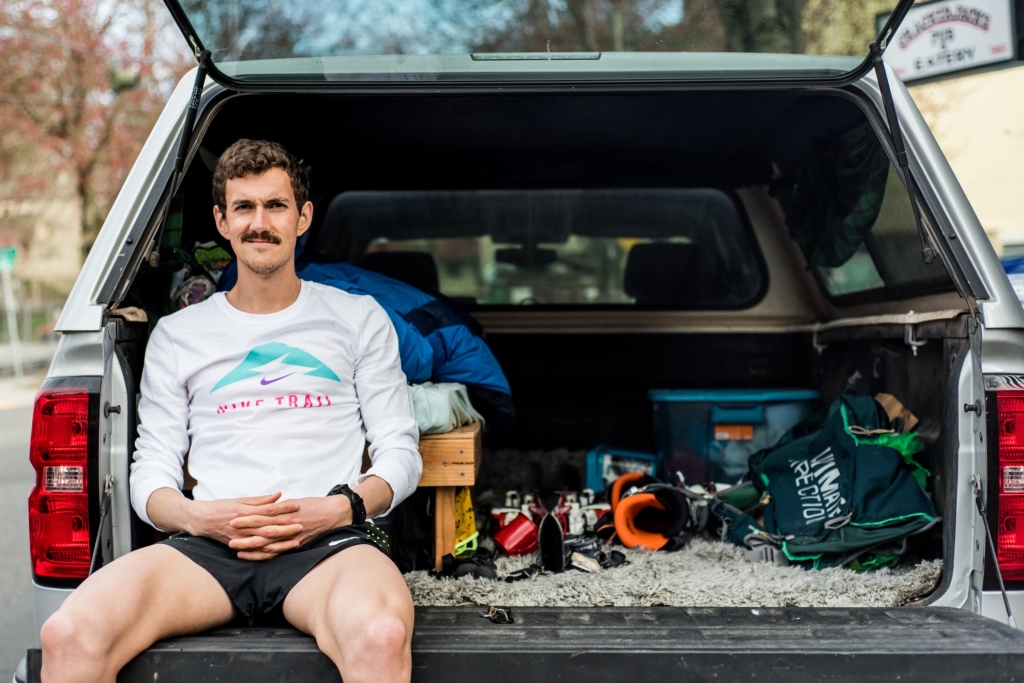
David Laney (24 debut/14:03). Did David book a wrong flight to Phoenix rather than Chamonix, France? Somebody tell him DS is a 24-hour track event and not in the Swiss Alps. The track is zero elevation and certainly isn’t as breathtaking as Grand Col Ferret, (the highest peak) of the Ultra Trail du Mont Blanc (UTMB)! Want an impressive running resume? How about a 3rd place at UTMB? Throw in a 2:17:02 marathon in 2014 that was a 2016 Olympic marathon trial qualifier. In 2015, David won the USATF 100k trail championship, the Chuckanut 50k, and took 12th place at the IAU world trail championship, helping Team USA to a silver medal in the team competition. In 2015, he was named the Ultrarunner of the Year. In 2018, he took a break from competition, but did end up running a blazing 14:03 at Rocky Raccoon. In a blog post shortly after RR, David wrote, “Fast courses are really nice…Maybe I need to find a road 100? Word on the street is David picked Desert Solstice to satisfy his desire for a fast 100-mile time. I’m a bit disappointed if he doesn’t go the full 24-hour. His resume strongly suggests solid odds of qualifying for the 24-hour USA Team which will compete in the IAU World Championship to be held in China Taipei in 2023. BTW, he recently ran 2:28 at the NY Marathon as a prelude to DS. If David’s goal was the 24-hour he would have been my surprise podium pick. Hopefully next year he graduates from the 100 to the 160+ big league.
Podium Picks
The weather forecast is excellent (66/43) and sunny for tomorrow’s race. It will be a bit warm during the afternoon but otherwise should be nearly perfect. Especially good sign for Arlen Glick who likes cooler weather. After much consideration, my podium picks are primarily based on proven 24-hour talent and strong recent performances as follows:
Men: expect a three way dogfight between Coury, Moss & Jackson—flip a coin
- Winner: Nick Coury -2 time winner eeks out the win by less than a mile with 165.5
- 2nd Jacob Moss-165.16
- 3rd Jake Jackson-165
- Wildcards- Hristo Tsvetko, Arlen Glick, Scott Traer & Simen Holvik
My presumption is Nick, Jacob & Jake primary goal at Desert Solstice will be to run 160+ and earn qualifier slots for Team USA team and a trip to the World Championship in Taipei in December 2023. Watch out for the internationals too: The youngster Hristo, the Bulgarian will likely run with abandon, set a personal best and challenge for the W. I also like Simen Holvik’s podium chances. I think he will soak up the Phoenix/Desert Solstice experience and eclipse 160. I anticipate super quick Arlen Glick to have a formidable lead at 1st 100 miles–the only unknown is whether he can endure 16 hours+. If yes, he wins.
Women:
- Winner: Camille Herron wins overall outright with 169 miles, just shy of Mike’s AR.In an effort to make th USA TEAM, expect another dogfight in the womens race. The top three or four could be within a few miles of each otherin the end.
- 2nd Pam Smith
- 3rd Marisa Lizak
- Wildcards: Micah Morgan, Whitney Richman & Sabrina Little
Notable absentees: Zach Bitter, Pat Reagan, Ryan Montgomery, Harvey Lewis, Bob Hearn, Taggart Vanetten, Courtney Dauwalter, the Slaby’s, Jon Olsen and Rich Riopel.
Supporting Data:
Listed below are historical data points for both Desert Solstice and the best 24 hour and 100-mile times for the DS entrants:
| (Top 10) 24-Hour DS Performances (Men) | (Top 10) 24-Hour DS Performances (Women) | |||||
| Year | Runner | Miles | Year | Runner | Miles | |
| 2015 | Pete Kostelnick | 163.68 | 2018 | Camille Herron | 162.91 | |
| 2018 | Jacob Jackson | 157.58 | 2014 | Katalin Nagy | 151.44 | |
| 2012 | Joe Fejes | 156.62 | 2019 | Marisa Lisak | 148.08 | |
| 2020 | Nick Coury | 155.41 | 2014 | Traci Falbo | 147.67 | |
| 2018 | Greg Armstrong | 155.10 | 2016 | Courtney Dauwalter | 147.49 | |
| 2018 | Nick Coury | 155.03 | 2020 | Marisa Lisak | 142.64 | |
| 2020 | Ryan Montgomery | 154.71 | 2018 | Micah Morgan | 140.00 | |
| 2014 | John Cash | 154.51 | 2020 | Whitney Richman | 139.69 | |
| 2018 | Bob Hearn | 154.05 | 2017 | Whitney Richman | 133.72 | |
| 2014 | Anders Tysk | 152.97 | 2012 | Connie Gardner | 132.22 |
Who’s coming?
(24 Hour Best Rank Order)
| First Name | Last Name | Age Group | Gender | Best 24 hr | Best 100 |
| Camille | Herron | 30-39 | W | 167.47 | 12:42 |
| Jacob | Jackson | 40-49 | M | 165.07 | 13:33 |
| Pete | Kostelnick | 30-39 | M | 163.68 | 14:04 |
| Jacob | Moss | 20-29 | M | 159.16 | 12:54 |
| Simen | Holvik | 40-49 | M | 157.42 | 14:06 |
| Nick | Coury | 30-39 | M | 155.41 | 13:21 |
| Hristo | Tsvetkov | 20-29 | M | 153.04 | 12:48 |
| Pam | Smith | 40-49 | W | 153.04 | 14:11 |
| Sabrina | Little | 30-39 | W | 151.69 | 14:55 |
| Micah | Morgan | 30-39 | W | 148.68 | 14:52 |
| Marisa | Lizak | 40-49 | W | 148.08 | 14:44 |
| Rolf | Schmidt | 40-49 | M | 145.8 | 15:42 |
| Jordan | Camastro | 30-39 | M | 143.63 | 15:14 |
| Padraig | Mullins | 40-49 | M | 142.43 | 15:35 |
| Jenny | Hoffman | 40-49 | W | 142.02 | 15:55 |
| Scott | Traer | 40-49 | M | 140.41 | 13:44 |
| Whitney | Richman | 40-49 | W | 139.69 | 16:13 |
| Viktoria | Brown | 40-49 | W | 132 | 15:24 |
| Jian | Springer | 50-59 | W | 125 | 25:30 |
| Jeffrey | Urbanski | 30-39 | M | 120.54 | 15:30 |
| Dan | McHugh | 50-59 | M | 100 | 14:34 |
| Arlen | Glick | 20-29 | M | debut | 12:57 |
| David | Laney | 30-39 | M | debut | 14:03 |
| Matthew | Urbanski | 40-49 | M | debut | 14:04 |
| Jimmie | Strahorn | 20-29 | M | debut | 15:40 |
| Darce | Claus | 50-59 | W | debut | 15:58 |
| Nicole | Monette | 30-39 | W | debut | 16:19 |
| Mandie | Holmes | 30-39 | W | debut | 16:50 |
| Sarah | Sawyer | 40-49 | W | debut | 18:39 |
(100 Mile Best Performance-Rank Order)
| First Name | Last Name | Age Group | Gender | Best 24 hr | Best 100 |
| Camille | Herron | 30-39 | W | 167.47 | 12:42 |
| Hristo | Tsvetkov | 20-29 | M | 153.04 | 12:48 |
| Jacob | Moss | 20-29 | M | 159.16 | 12:54 |
| Arlen | Glick | 20-29 | M | debut | 12:57 |
| Nick | Coury | 30-39 | M | 155.41 | 13:21 |
| Jacob | Jackson | 40-49 | M | 164.7 | 13:33 |
| Scott | Traer | 40-49 | M | 140.41 | 13:44 |
| David | Laney | 30-39 | M | debut | 14:03 |
| Pete | Kostelnick | 30-39 | M | 163.68 | 14:04 |
| Matthew | Urbanski | 40-49 | M | debut | 14:04 |
| Simen | Holvik | 40-49 | M | 157.42 | 14:06 |
| Pam | Smith | 40-49 | W | 153.04 | 14:11 |
| Dan | McHugh | 50-59 | M | 100 | 14:34 |
| Marisa | Lizak | 40-49 | W | 148.08 | 14:44 |
| Micah | Morgan | 30-39 | W | 148.35 | 14:52 |
| Sabrina | Little | 30-39 | W | 151.69 | 14:55 |
| Jordan | Camastro | 30-39 | M | 143.63 | 15:14 |
| Viktoria | Brown | 40-49 | W | 132 | 15:24 |
| Jeffrey | Urbanski | 30-39 | M | 120.54 | 15:30 |
| Padraig | Mullins | 40-49 | M | 142.43 | 15:35 |
| Jimmie | Strahorn | 20-29 | M | debut | 15:40 |
| Rolf | Schmidt | 40-49 | M | 145.8 | 15:42 |
| Jenny | Hoffman | 40-49 | W | 142.02 | 15:55 |
| Darce | Claus | 50-59 | W | debut | 15:58 |
| Whitney | Richman | 40-49 | W | 139.69 | 16:13 |
| Nicole | Monette | 30-39 | W | debut | 16:19 |
| Mandie | Holmes | 30-39 | W | debut | 16:50 |
| Sarah | Sawyer | 40-49 | W | debut | 18:39 |
| Jian | Springer | 50-59 | W | 125 | 25:30 |
